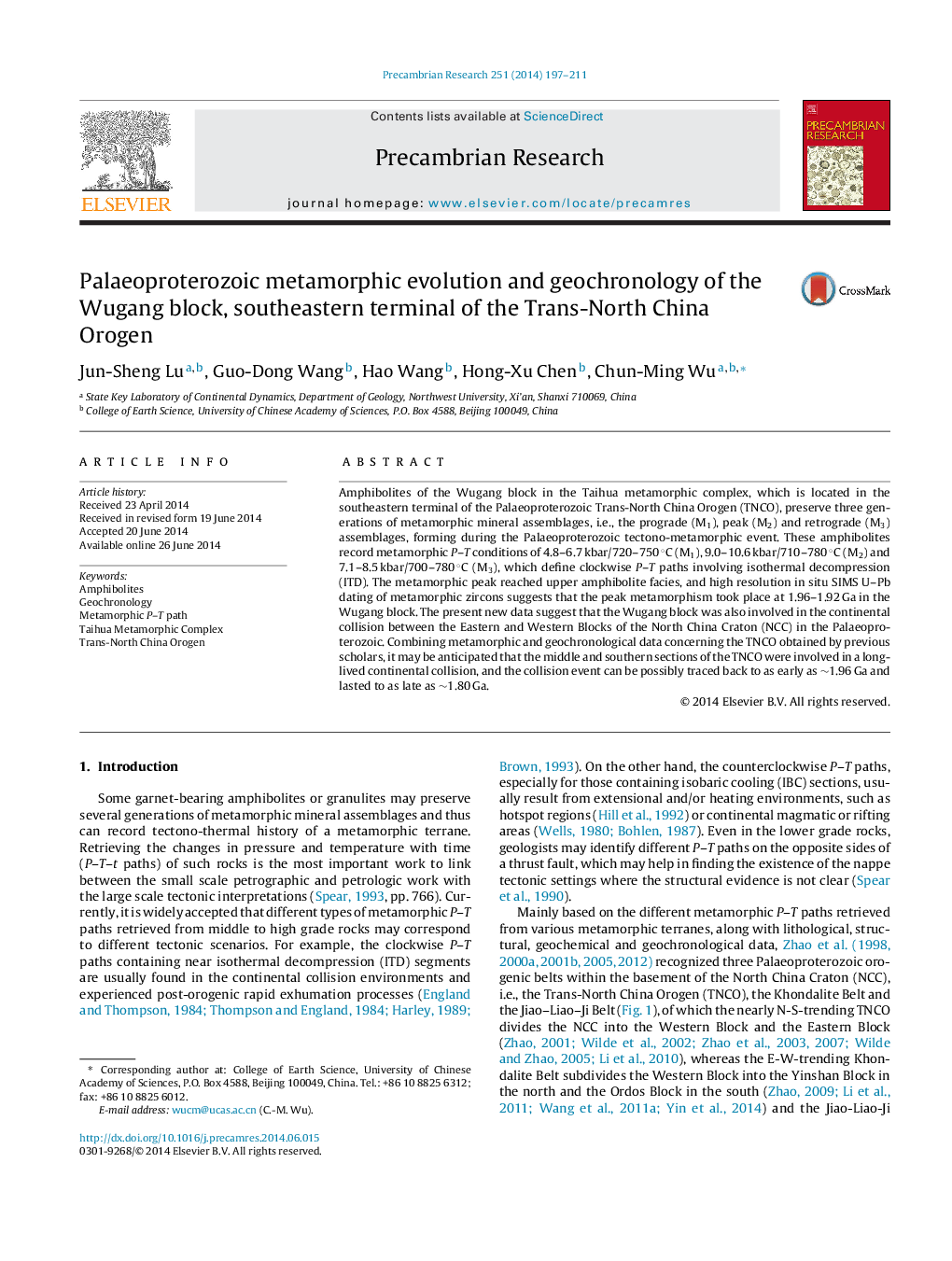| Article ID | Journal | Published Year | Pages | File Type |
|---|---|---|---|---|
| 4722895 | Precambrian Research | 2014 | 15 Pages |
•Clockwise P–T–t paths were retrieved from the Wugang amphibolites.•The peak metamorphism took place at ca. 1.96–1.92 Ga.•Metamorphic event of the southeastern TNCO started earlier.
Amphibolites of the Wugang block in the Taihua metamorphic complex, which is located in the southeastern terminal of the Palaeoproterozoic Trans-North China Orogen (TNCO), preserve three generations of metamorphic mineral assemblages, i.e., the prograde (M1), peak (M2) and retrograde (M3) assemblages, forming during the Palaeoproterozoic tectono-metamorphic event. These amphibolites record metamorphic P–T conditions of 4.8–6.7 kbar/720–750 °C (M1), 9.0–10.6 kbar/710–780 °C (M2) and 7.1–8.5 kbar/700–780 °C (M3), which define clockwise P–T paths involving isothermal decompression (ITD). The metamorphic peak reached upper amphibolite facies, and high resolution in situ SIMS U–Pb dating of metamorphic zircons suggests that the peak metamorphism took place at 1.96–1.92 Ga in the Wugang block. The present new data suggest that the Wugang block was also involved in the continental collision between the Eastern and Western Blocks of the North China Craton (NCC) in the Palaeoproterozoic. Combining metamorphic and geochronological data concerning the TNCO obtained by previous scholars, it may be anticipated that the middle and southern sections of the TNCO were involved in a long-lived continental collision, and the collision event can be possibly traced back to as early as ∼1.96 Ga and lasted to as late as ∼1.80 Ga.
